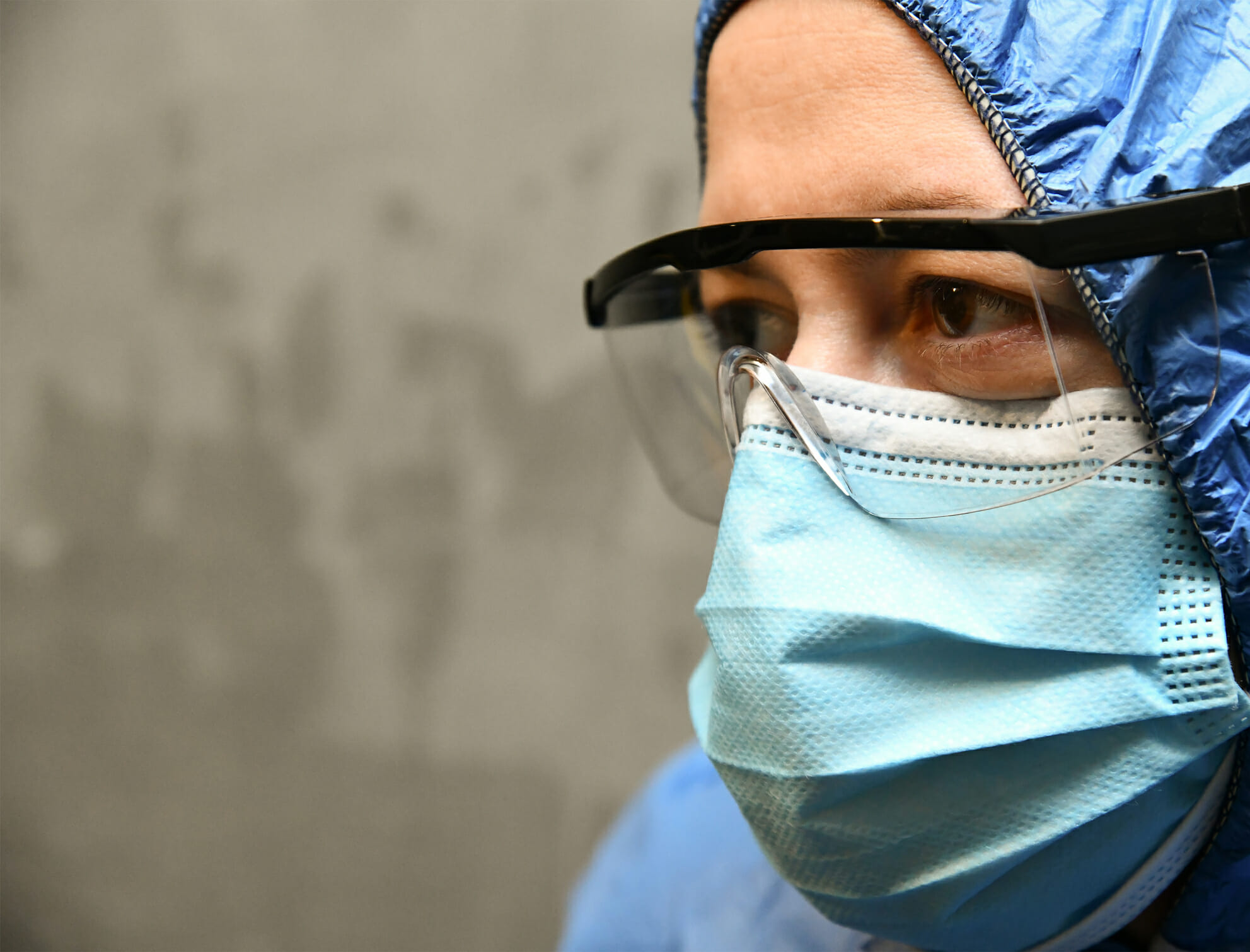Taping the upper edge of an N95 mask had a positive impact on ocular surface stability, correlating with a decrease in dry eye symptoms in healthcare workers who wore masks on a regular basis, according to a study published in American Journal of Ophthalmology.
The prospective interventional before-and-after study looked at 50 eyes of 50 healthcare workers (mean age: 26.7 ± 3.67 years) who used N95 masks. Since the start of the severe acute respiratory syndrome coronavirus 2 (SARS-CoV-2) pandemic, “the widespread use of face masks has … led to the emergence of mask-associated dry eye disease with adverse impact on ocular surface stability, characterized by deranged tear break-up time, ocular surface staining scores, and Schirmer I measurements over long-term,” researchers write.
So they assessed the following factors in those healthcare workers after 8-hour shifts when they’d worn an N95 mask and not taped the upper edge: Pre-intervention, ocular surface parameters, subjective dry eye score, and visual acuity.
Continue Reading
The next day, the healthcare workers taped the upper edge of the N95 mask to their nasal bridge at the start of their 8-hour shift, with post-intervention assessment performed following their shift. The primary outcome measure was change in non-invasive tear break-up time (NIBUT) and the secondary outcome measures were change in the symptom score, tear lipid layer thickness (LLT), TBUT, Schirmer I test, tear meniscus height (TMH), osmolarity and visual acuity.
Researchers found that post-taping, patients had significantly better ocular surface stability in NIBUT (P <.001), TBUT (P <.001), LLT (P <.001), TMH (P =.01), corneal staining score (P =.001), and tear osmolarity (P =.04). No significant changes in visual acuity, Schirmer I, and OSDI score (P >.05) were observed. In addition, 68% of patients reported symptom improvement (SANDE version 2), which correlated with change in NIBUT (r = 0.38; P =.005), TMH (r = 0.37, P =.007), LLT (r = 0.35; P =.01), and TBUT (r = 0.28; P =.04).
“In our study, both assessments were performed at the end of the 8-hour shift; however, the baseline ocular surface status at the start of work shift on both days may not have been exactly same for the participants, which could have potentially affected the measured post-shift outcomes,” according to the researchers.
“While our study demonstrates the advantages of taping the upper mask edge for a relatively short duration of time in normal individuals, the benefits may be even more pronounced when assessed over a longer duration and in known cases of dry eye. Further studies are required to establish the long-term efficacy of taping the upper mask edge in normal individuals as well as those suffering from dry eye disease. As regular use of face mask is likely to continue for the foreseeable future, we recommend the practice of taping the upper mask edge, especially in professions that require continuous face mask use for long hours.”
Reference
Nair S, Kaur M, Sah R, Titiyal JS. Impact of taping the upper mask edge on ocular surface stability and dry eye symptoms. Am J Ophthalmol. 2022:S0002-9394(22)00007-1. doi:10.1016/j.ajo.2022.01.006
This article originally appeared on Ophthalmology Advisor
this content first appear on medical bag

